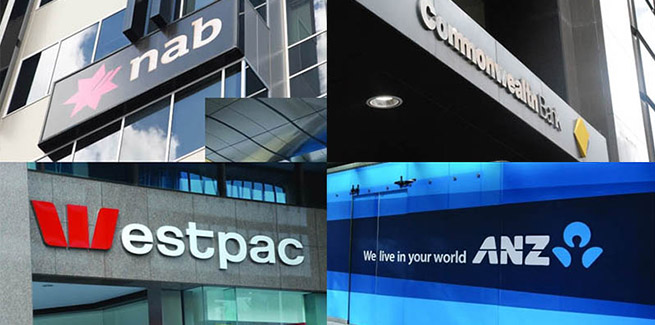An analysis of the big four banks’ financial results from consultancy firm EY has revealed that the collective cash earnings of the banks fell $2.3 billion (7.8 per cent) to $26.9 billion in the 2019 financial year (FY19).
Return on equity decreased by an average of 125 bps to 10.9 per cent, while average net interest margins fell by an average of 9 bps to 1.94 per cent.
EY also reported that collective customer remediation costs totalled $5.7 billion, up $2.7 billion from FY18.
According to EY, the FY19 results of Australia’s big four banks reflect an “extremely challenging 12 months” for the sector.
EY Oceania banking and capital markets leader Tim Dring said he expects headwinds to continue throughout FY20.
“There’s no doubt that 2019 has been a tough year for Australia’s major banks, and the storm clouds show no signs of abating,” he said.
“Declining profits and margins have seen the banks cut dividends and preserve capital, as they batten down the hatches and brace for further challenging conditions ahead.”
Mr Dring attributed the weakened performances of the major banks to a number of factors, including:
- uncertainty in global markets;
- a slowing local economy and “ultra-low interest rate environment”;
- increasing consumer and regulatory pressures; and
- heightened competition and significant remediation costs.
Mr Dring also pointed to the effects of stagnation in the global economy on domestic market conditions, weaker margins associated with new lending, and continued regulatory and compliance costs.
“With the global economy largely stuck in neutral, and subdued consumer and business confidence constraining inflation and wage growth, pressure will be placed on unemployment rates, loan arrears and asset values,” he said.
“For now, asset quality remains strong, but benign credit conditions will not continue indefinitely and, when the credit cycle turns, that will squeeze the banks’ future profits even further.
“The banks are also facing additional headwinds in the form of elevated risk and compliance investment requirements and the need for additional remediation provisions.”
Rebound in credit won’t ease cost pressures
According to the EY analyst, the recovery in demand for housing loans won’t significantly bolster the major banks’ underlying financial position.
“Growth in the critical home lending segment remained subdued during 2019, with tighter lending standards appearing to be the new world order,” Mr Dring said.
“While there have been early signs of turnaround – with some markets showing an increase in loan applications and approvals in recent month – declining market share and a squeeze on margins as interest rates fall point to continuing housing credit growth challenges for the major banks.”
Mr Dring also pointed to scrutiny on the big four banks’ mortgage pricing behaviour culminating in the launch of the Australian Competition and Consumer Commission’s (ACCC) mortgage pricing inquiry.
“Pricing in the front versus the back book is under scrutiny, too, with banks under pressure to close the gap,” he said.
“Banks have traditionally benefited from higher margins in their back books, while offering heavy discounts form new borrowers.
“However, the government has recently directed the ACCC to investigate the banks’ failure to pass on official rate cuts in full, and margins will face further compression if this gap is narrowed or closed.”
The EY analyst added that competition in the personal lending space and varied levels of demand across the business lending segment to place further pressure on bank margins.
Mr Dring concluded by noting that the banks would need to make “tough choices in order to remain relevant and rebuild trust” in FY20, particularly in light of the advent of open banking.
“With the rapidly approaching introduction of open banking, the next few years will usher in changes that will fundamentally shift the Australian financial services landscape,” he said.
“Banks should be considering a shift to more transparent strategies that focus on promoting customers’ financial wellbeing and moving away from product-centric selling models towards ones that offer more customer-centric, personalised subscription-based services,” Mr Dring said.
[Related: NAB profits slide amid ‘disappointing’ lending result]
 ;
;
